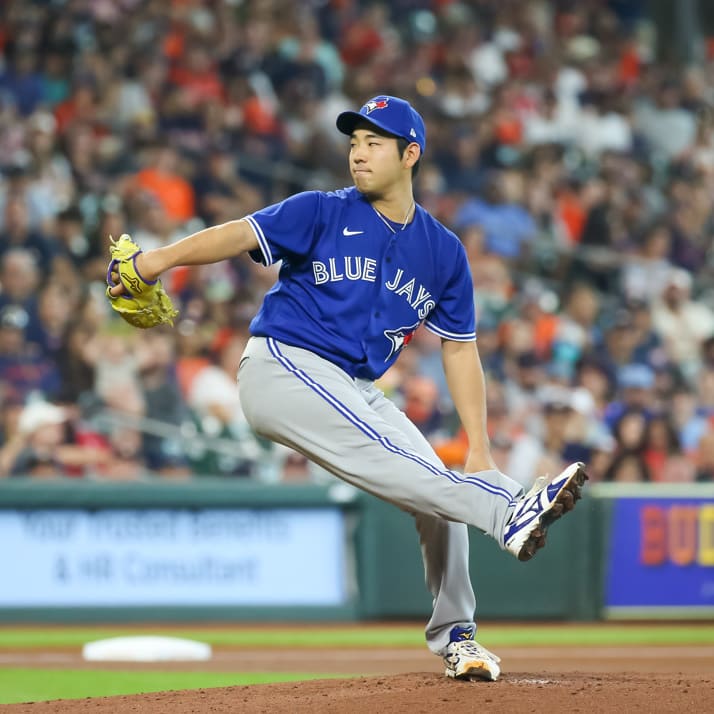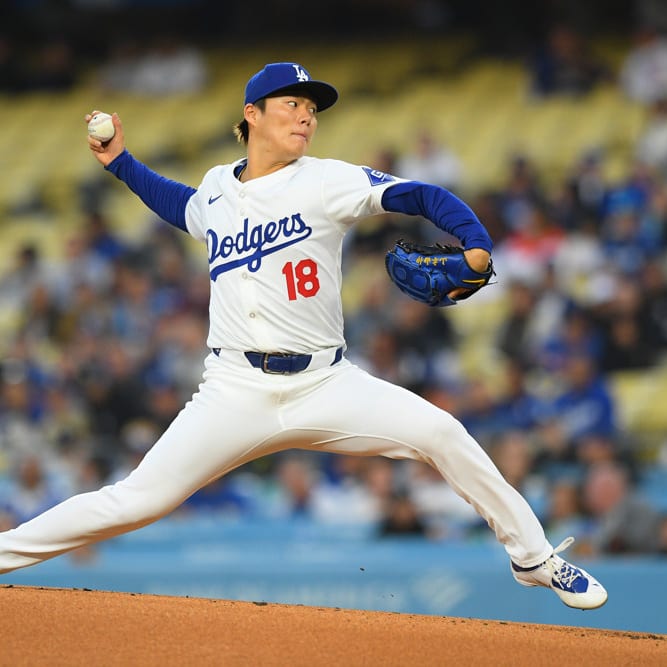This article is part of our The Z Files series.
Welcome to the inaugural edition of The Z Files, a new weekly feature column discussing all things fantasy baseball. Today's topic will be what I learned after contributing to RotoWire's 2016 Fantasy Baseball Composite Rankings.
"All you need to do is take our present ranking list and move the players up and down according to your ranks."
Piece of cake!
I start drafting in November. I've had projections and dollar values for over two months. All I need to do is put the hitters and pitchers in the same column and sort by dollar value. Nothing to it.
Wrong.
I mean, really, really wrong.
I don't draft off a composite ranking list so even though I've been doing projections, values and ranking for years, I've never actually put them together and really looked at the list. Tier drafting is my preference. We'll talk about that later in the spring.
Obviously, it's not ground-breaking analysis to say a ranking list and a draft list are two separate entities. What caught me off guard was even if the instruction is to rank the player were you'd draft him, not necessarily where he ranks according to value in a vacuum, finding the right spot isn't cut and dried.
Let's look at a player I'm higher on than everyone but his family and close friends: A.J. Pollock. Converting his static projection into a dollar value then ranking by value, Pollock is my fifth player overall, with only Paul Goldschmidt, Mike
Welcome to the inaugural edition of The Z Files, a new weekly feature column discussing all things fantasy baseball. Today's topic will be what I learned after contributing to RotoWire's 2016 Fantasy Baseball Composite Rankings.
"All you need to do is take our present ranking list and move the players up and down according to your ranks."
Piece of cake!
I start drafting in November. I've had projections and dollar values for over two months. All I need to do is put the hitters and pitchers in the same column and sort by dollar value. Nothing to it.
Wrong.
I mean, really, really wrong.
I don't draft off a composite ranking list so even though I've been doing projections, values and ranking for years, I've never actually put them together and really looked at the list. Tier drafting is my preference. We'll talk about that later in the spring.
Obviously, it's not ground-breaking analysis to say a ranking list and a draft list are two separate entities. What caught me off guard was even if the instruction is to rank the player were you'd draft him, not necessarily where he ranks according to value in a vacuum, finding the right spot isn't cut and dried.
Let's look at a player I'm higher on than everyone but his family and close friends: A.J. Pollock. Converting his static projection into a dollar value then ranking by value, Pollock is my fifth player overall, with only Paul Goldschmidt, Mike Trout, Clayton Kershaw and Bryce Harper (in that order) ahead of him.
In a 12 or 15-team mixed league, I'd take Pollock in that spot if those exact four players were off the board. His average draft position (ADP) is about 10 to 12 picks later, so obviously a pick later in the first round is preferred. But if that's not case, Pollock would be the fifth player off the board.
Here's the tricky part: being a slave to ADP is a mistake. The goal should be to draft a player YOU expect to return a profit relative to his draft spot, or, at a minimum, break even. It doesn't matter what the market thinks – it's your team, your call. However, there are scenarios where ADP can be a guide. What if this was a 12-team league and I had the 11th pick and 14th picks. There's no guarantee Pollock would make it to 14, but it's much more likely than making it to 20, which is the second-round pick for the owner who picked at No. 5. Let's say another top-10 is on the board. A strong argument can be made to draft that player at 11 and hope Pollock makes it to 14, especially if that first player has a good chance of being taken with one of the two wheel picks.
In other words, I'd take Pollock fifth overall but would pass on him at 11. Pretty crazy.
So if this is the case, where do I rank him – fifth? 14th? Somewhere in between?
As you are likely aware, these rankings are fluid. Most of the changes are a reaction to news or altering one's performance expectation. However, as my fellow rankers complete more drafts, get a better feel for the market and develop a general game plan, we should be altering the rankings to reflect that mindset.
As such, here's what I've decided to do the next time I update my top-350: I'll ask, "Would you take Pollock sixth? Seventh?" The new rank will be where game theory trumps the rank, probably about 10 in a 12-team league. I still feel he'll be the fifth best player, but ranking him 10th also accounts for strategy.
Looking at my rankings, a couple other players that I'll have to adjust similarly are J.D. Martinez and Corey Dickerson. The reason I'm higher on most than Pollock is the expectation of full time at-bats atop a very potent lineup. It's not the rate of production but the added stats resulting from an aggressive playing time expectation.
With respect to Martinez, he's either going to hit clean up, giving him a few more plate appearances than last season, or fifth, with a healthy Miguel Cabrera and Justin Upton in front of him. Either way, his production should benefit. Most importantly, he's among the league leaders in hard contact which supports both power and strong batting average. Dickerson is another playing time difference along with not discounting him for the possibility of a trade.
Another example of how a ranking list differs from a draft list is with stolen base specialists. The value in a vacuum of players swiping a lot of bags is higher than most perceive. Their draft spot is usually pushed down, figuring if steals are needed, it's viable to wait since the demand on stolen base specialists is relatively low. In addition, once you've selected Ben Revere or Billy Hamilton, every other stolen base specialist gets moved down since you probably can't afford to sacrifice homers and RBI from a second hitter.
Admittedly, Ben Revere's value in a vacuum is higher than suggested by his Top-350 ranking. Count me with those that prefer to cobble steals throughout my hitters as opposed to making up for a deficiency with a one or two-category contributor. That said, sometimes the draft doesn't cooperate and a stolen base specialist is needed to balance things out. I'm still not taking the speedster where his value in a vacuum places him – the market organically depresses his value and there are a number of options from which I can choose. The spot Revere and others of his ilk are ranked is the latest I'd take them if my team construct dictated adding a bunch of speed.
The final subset of players whose draft ranks are difficult to pinpoint are pitchers. This will be a topic for its own Z Files so by means of introduction, my philosophy is draft the pitcher, not the round. It's a huge mistake to enter a draft with the mindset not to take a hurler until the "fill-in-the-blank" round. Further, if you have the top pitcher left on your sheets ranked 59th and you're up at pick 47, it's wrong to pass because the pitcher isn't a good value.
We'll talk more about this later in the spring but the proper approach is to have a goal in mind with respect to the construct of your staff. You could have multiple designs, all intended to land in an expected range of ratios. This is an oversimplification, but if you're target ERA is 3.50, then you need a few pitchers with an ERA better than that. The biggest mistake made by those that fade pitching is thinking value translate to points. Unless you plan to get fewer pitching points and compensate by bullying up hitting points, you need to take hurlers who will contribute to your target ERA, whether they're at value or not. In other words, draft the pitcher, not the round.
OK, that's fine, but they still need to be ranked. Without boring you with too much valuation theory, in order to calculate dollar values, the amount of budget dedicated to hitting and pitching must be decided upon. Once 5x5 overtook 4x4 as the main rotisserie format, about 69 percent of the draft day budget is dedicated to hitters. So when most use their auction prices to generate an overall list, they use the same split as auctions.
The method I prefer is to pick out a few pichers and decide where I'd take them relative to the hitters. Then, by trial and error, the split that generates an overall list most resembling those pitcher rankings is determined and used to set the list. The split is usually around 72:28. But as suggested, if pitching is being drafted aggressively, be ready to decide where you want to jump in before it's too late, regardless of ranking by dollar value.
The take home message for all of this is be careful how you utilize our Top-350 or even an ADP. Neither are designed as a "take one off the top" entity. Think of them more as a means to ballpark both value in a vacuum and market ranking. Ultimately, what matters most is team construct with the objective of finishing with a squad that will with the league, not the draft (another topic for a future column).










